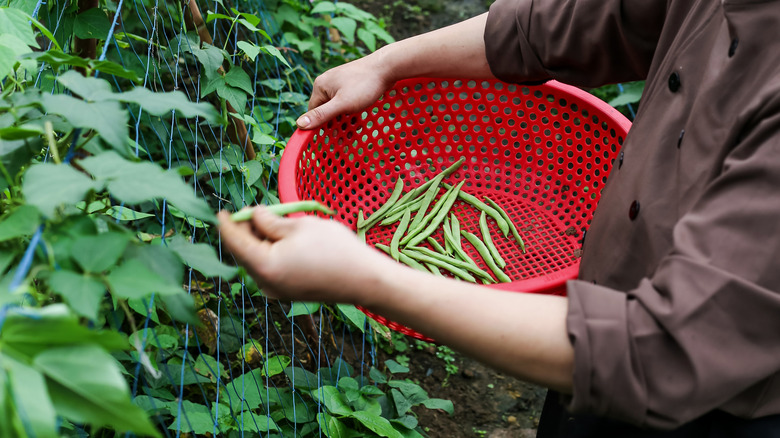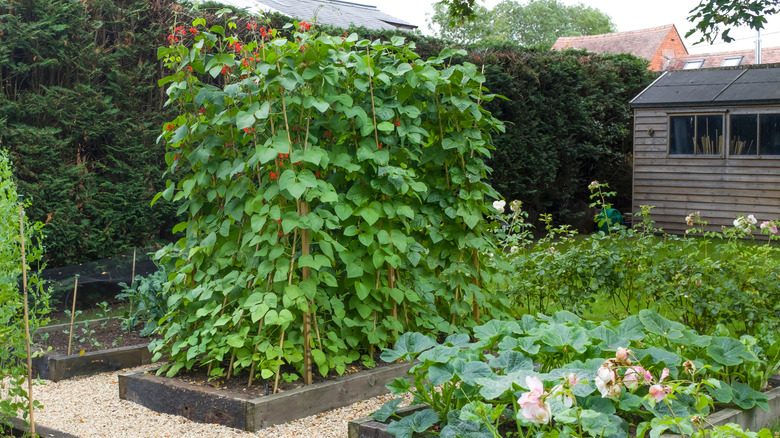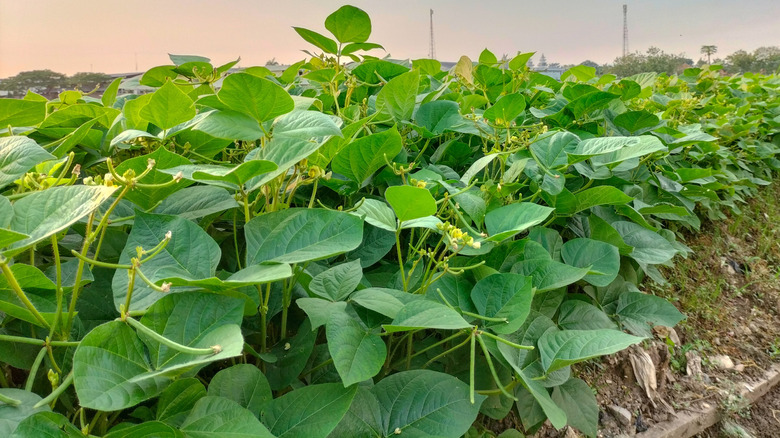Bush Vs Pole Beans: What's The Difference And Which Should You Grow?
When it's time to purchase seeds for your spring garden, you'll likely be presented with a huge variety to choose from. Even if you're just trying to grow a few bean plants, the selection can be overwhelming. You might notice that some are labeled as bush beans and others as pole beans. You're probably wondering what the difference is, and which one you should grow. The difference between bush vs pole plants can be seen in their specific growth habit: While bush plants are fairly compact and don't require support, pole varieties are vining and can reach heights of over 6 feet.
While both bush bean and pole bean plants are easy to grow, the best option for you depends on how much space and infrastructure you have in your garden. It's also important to consider when and how you want to harvest your delicious beans. Because of their height, pole beans require trellises or other supports to grow. Bush beans, on the other hand, can generally thrive with little or no support but have a larger footprint. While pole beans are often more productive, bush beans have the advantage of cropping more quickly.
Advantages of growing pole beans
When choosing whether to grow bush or pole beans, many gardeners will have a preference for one or the other, while others will plant both. It all comes down to the amount of space you have available, and whether you want to put in solid support structures. Because pole beans grow vertically, they require support, but don't take up as much horizontal space in your garden as their bushier relatives. You'll find that pole varieties will generally produce a bigger crop, simply because they end up being much larger plants. They're also easier to harvest, as you don't have to bend over and search through the foliage. When the plants grow on a trellis, the beans are far easier to spot; picking your crops as soon as they're ready will ensure lots of subsequent harvests.
In general, pole varieties will produce a harvestable crop for considerably longer than bush beans. If you're looking for a bumper crop over an extended period, pole beans could be your best bet. Just remember that you'll need to put in a little extra time and effort initially by building some type of trellis climbing frame. If you're keen to try some pole beans, consider making an easy and affordable DIY bean trellis.
Advantages of growing bush beans
One of the major advantages that bush beans have over pole beans is that they generally don't require any type of support. This will save you preparation time and initial material costs. Plus, you won't have to constantly monitor the growth and tie any straggling vines onto the climbing frame. Even better, if some empty spots open up in your garden beds, bush beans can easily be popped in. It's a great way to keep your garden productive throughout the growing season, because bush beans are one of those vegetables that you can plant in the middle of summer and still end up with a fantastic crop. Another advantage of bush beans is that they'll usually crop earlier than their climbing cousins, although their cropping season may be a bit shorter.
Thanks to their rather low-growing habit, bush beans are easy to grow in containers. This is especially beneficial if you're limited to growing on a balcony or patio, where putting in a trellis might not be feasible. Finally, if one of your bush bean plants dies or succumbs to disease, it's easy to just pull it out and replace it, saving you the work of cutting dead vines from a large climbing structure.


